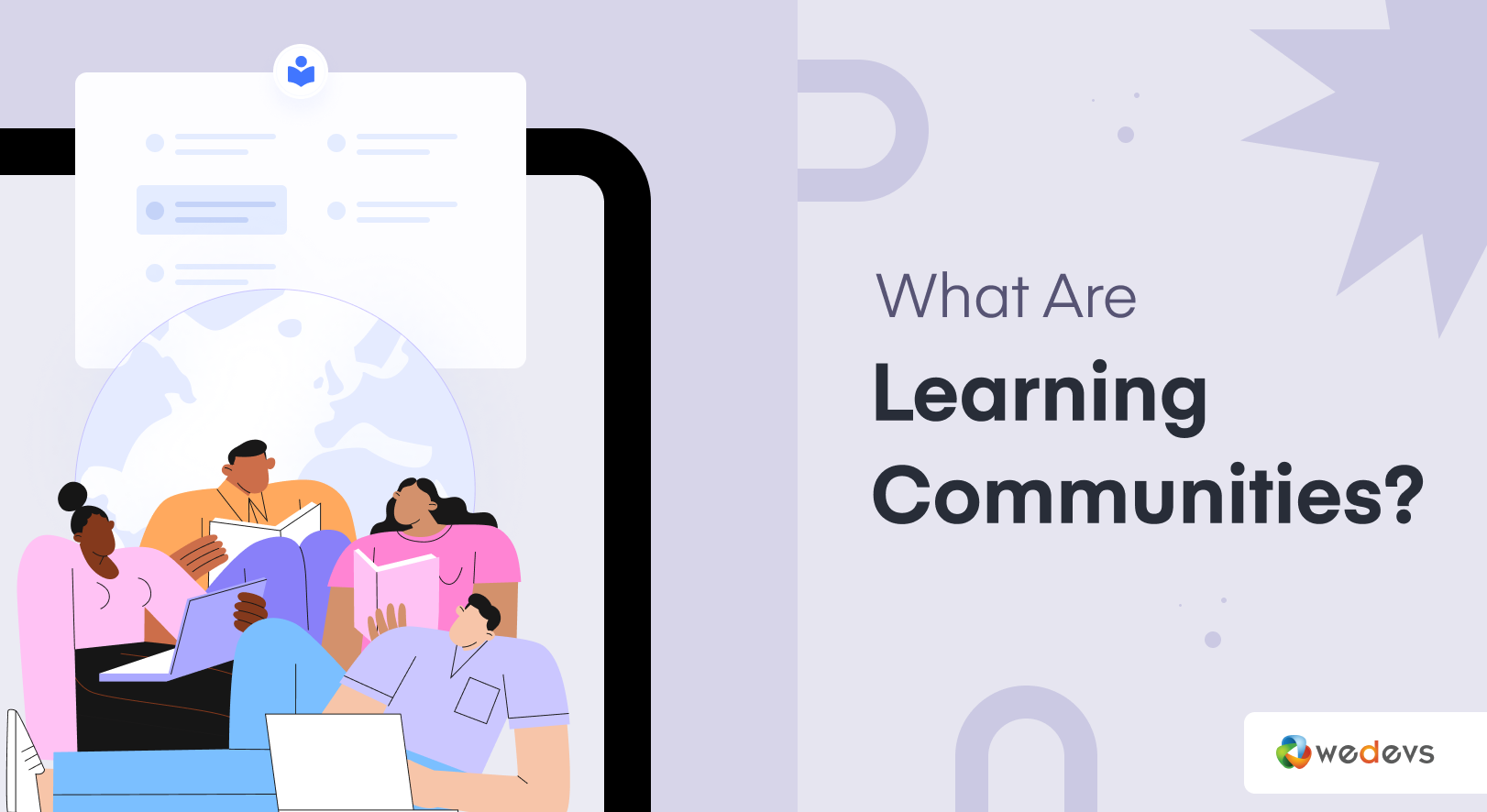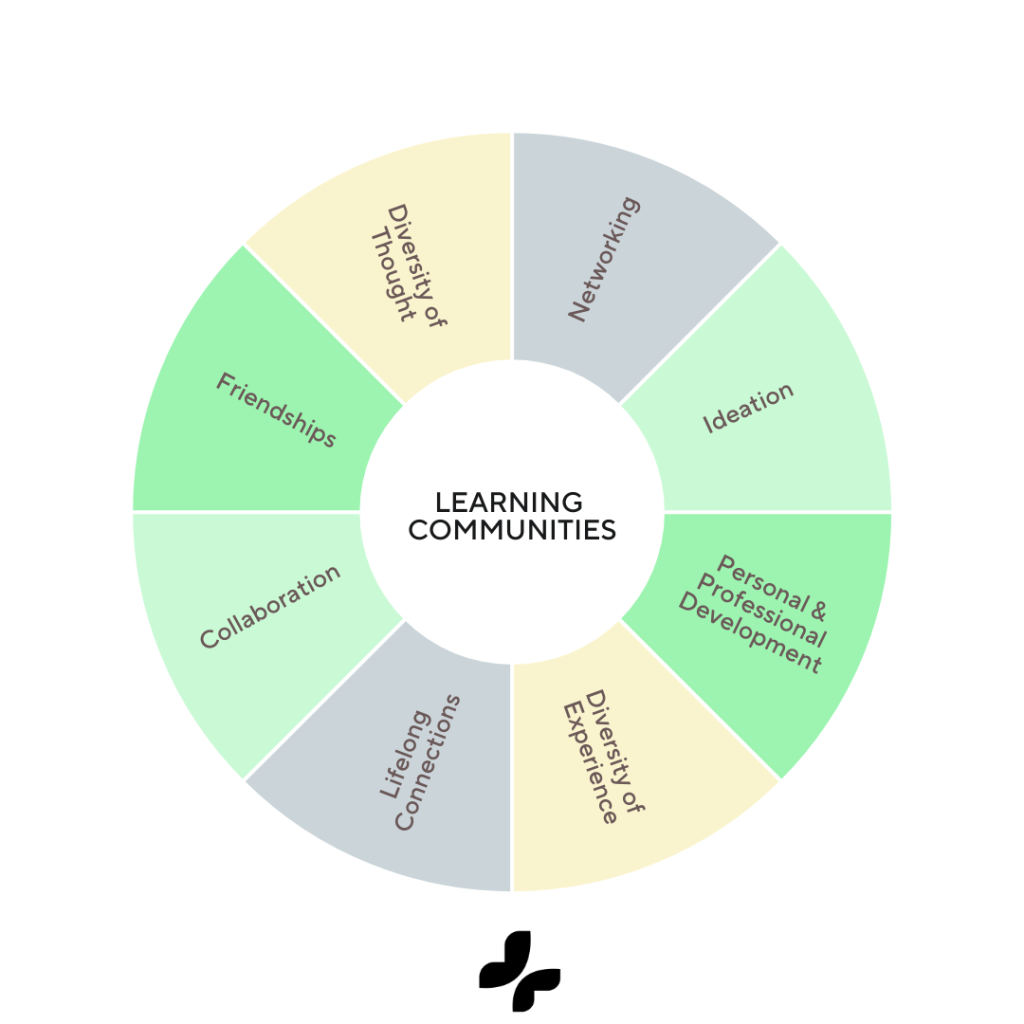Education thrives in environments where collaboration, support, and shared knowledge are encouraged. Learning communities bring students, educators, and stakeholders together to create engaging, inclusive, and dynamic educational networks. These communities foster lifelong learning, skill development, and meaningful relationships, leading to better educational outcomes and personal growth.
In today’s world, traditional classroom learning is evolving into more collaborative, digital, and interdisciplinary models. Whether in schools, universities, or professional settings, learning communities help individuals develop critical thinking skills, creativity, and social connections.
This article explores:
- What learning communities are and why they matter.
- Types of learning communities in education.
- Benefits of learning communities for students, educators, and institutions.
- How to build and sustain effective learning communities.
- The role of technology in expanding learning networks.
What Are Learning Communities?

A learning community is a group of individuals who come together to share knowledge, experiences, and support in a structured learning environment. These communities promote collaboration, engagement, and deeper understanding of academic and professional subjects.
Key Features of a Learning Community:
- Shared Goals: Members have a common purpose (e.g., academic success, professional development, skill-building).
- Collaborative Learning: Knowledge is gained through group discussions, peer mentoring, and teamwork.
- Supportive Environment: Encourages reflection, feedback, and mutual encouragement.
- Continuous Growth: Focuses on lifelong learning and skill enhancement.
📌 Example: A group of students working together on a long-term research project, regularly exchanging ideas and insights, represents a learning community in action.
Types of Learning Communities in Education
Learning communities can take various forms, each designed to serve specific educational purposes.
1. Classroom-Based Learning Communities
- Groups of students within a classroom or school who collaborate to enhance learning.
- Encourages peer support, discussion-based learning, and student engagement.
📌 Example: A reading group where students analyze literature together, discussing themes and perspectives.
2. Online Learning Communities
- Digital platforms where learners engage in forums, webinars, or virtual study groups.
- Connects learners globally, allowing for diverse perspectives and networking.
📌 Example: A MOOC (Massive Open Online Course) discussion group where participants from different countries exchange insights.
3. Professional Learning Communities (PLCs)
- Groups of educators or professionals working together to improve teaching strategies, research, and professional growth.
- Encourages collaborative problem-solving, curriculum development, and shared best practices.
📌 Example: A team of teachers meeting weekly to analyze student performance data and adjust lesson plans accordingly.
4. Interdisciplinary Learning Communities
- Groups that blend different subjects to create a holistic learning experience.
- Encourages cross-disciplinary thinking and innovation.
📌 Example: A partnership between science and history teachers to explore the scientific advancements of past civilizations.
5. Student-Led Learning Communities
- Peer-led groups where students take initiative in organizing learning activities, discussions, or study groups.
- Encourages leadership, autonomy, and active learning.
📌 Example: A STEM club where students work together on coding projects and engineering challenges.
6. Community-Based Learning Networks
- Partnerships between schools, businesses, nonprofits, and local organizations.
- Provides real-world learning opportunities through internships, service projects, and mentorship programs.
📌 Example: A university-community partnership where students work with local organizations to address environmental issues.
Benefits of Learning Communities
1. Increases Student Engagement and Motivation
- Students feel more connected and engaged in their learning when working collaboratively.
- Group discussions and teamwork make learning more dynamic and meaningful.
📌 Example: A student struggling with math may improve when working with peers in a supportive study group.
2. Encourages Deeper Learning and Critical Thinking
- Discussion-based learning helps students analyze and synthesize information better than solitary study.
- Exposure to diverse perspectives enhances critical thinking skills.
📌 Example: A philosophy learning community where students debate ethical dilemmas, challenging each other’s viewpoints.
3. Builds Social and Emotional Skills
- Encourages collaboration, empathy, and teamwork.
- Helps students develop confidence and communication skills.
📌 Example: A group project in a learning community requires members to listen, compromise, and problem-solve together.
4. Supports Academic Success and Retention
- Students in learning communities tend to perform better and stay engaged in their coursework.
- Peer support helps reduce dropout rates in schools and colleges.
📌 Example: First-year college students in learning cohorts have higher retention rates than those studying in isolation.
5. Enhances Professional Development for Educators
- Teachers in Professional Learning Communities (PLCs) share best practices and improve instructional methods.
- Fosters a culture of collaboration in schools and institutions.
📌 Example: A PLC where teachers discuss innovative teaching strategies for remote learning.
How to Build and Sustain Effective Learning Communities
1. Establish Clear Goals and Purpose
- Define what the learning community aims to achieve.
- Align goals with academic or professional growth.
📌 Example: A school might create a math tutoring community to help struggling students improve their skills.
2. Foster a Culture of Collaboration and Inclusion
- Encourage open discussions, respect for diverse viewpoints, and teamwork.
- Ensure all voices are heard, making learning accessible and inclusive.
📌 Example: A classroom-based peer mentoring system where experienced students help newcomers.
3. Utilize Technology and Digital Platforms
- ✔Leverage online forums, discussion boards, and collaborative tools to expand reach.
- Use platforms like Google Classroom, Microsoft Teams, or Slack for communication.
📌 Example: A global learning community on social justice issues using Zoom for virtual discussions.
4. Encourage Leadership and Student Ownership
✔ Empower students to take initiative, organize discussions, and lead activities.
✔ Give members roles to enhance responsibility and engagement.
📌 Example: Assign rotating leadership roles in student-led learning circles.
5. Provide Support and Resources
✔ Offer access to study materials, workshops, and mentorship opportunities.
✔ Facilitate networking between students, educators, and professionals.
📌 Example: A university learning community with guest lectures from industry leaders.
6. Promote Reflection and Continuous Improvement
✔ Regularly assess community effectiveness and make adjustments.
✔ Encourage members to provide feedback on their learning experiences.
📌 Example: A PLC that meets monthly to review teaching strategies and student outcomes.
The Role of Technology in Expanding Learning Communities
1. Virtual Learning Networks
✔ Online communities connect learners across the world.
✔ Examples: LinkedIn Learning, Coursera, Edmodo, Google Scholar.
📌 Example: A teacher joins an international PLC on education technology to share best practices.
2. Social Media and Online Collaboration
✔ Platforms like Twitter, Facebook, and Reddit host academic and professional discussion groups.
✔ Students and educators can share resources and engage in conversations globally.
📌 Example: A book club on Goodreads discussing global literature themes.
Conclusion: The Future of Learning Communities
Learning communities are essential for fostering engagement, critical thinking, and lifelong learning. Whether through classroom-based groups, online platforms, or professional networks, these communities create supportive, inclusive spaces that empower individuals to collaborate, grow, and succeed.
By embracing technology, student leadership, and interdisciplinary approaches, educators and learners can build stronger, more effective learning communities that prepare individuals for both academic and professional success.
📌 What learning communities have you been a part of? Share your experiences and ideas below! 🚀📚



